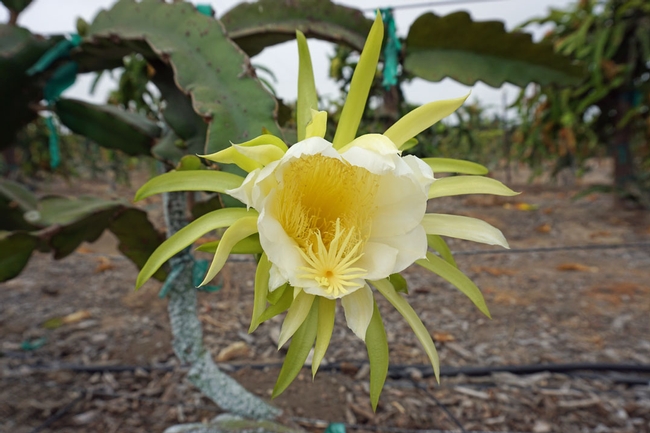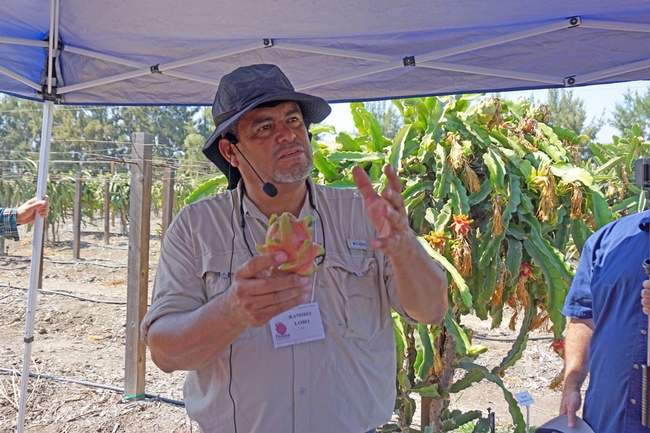
Know Thy Pitahaya
UC Cooperative Extension advisor Ramiro Lobo has found that the unusually beautiful fruiting cactus - pitahaya or dragon fruit - thrives in Southern California's mild climate. Pitahaya do well in regions where avocados are produced, but use much less water. They can also make excellent landscape plants, adding interest to the garden while producing healthful fruit.
Pitahaya fruit begin as large, showy, nighttime-blooming flowers, each of which contain male and female parts. In many of the most-desirable varieties, the anthers (the male part with pollen) and the stigma (the female part that needs to be pollinated) are separated by a distance that prevents night-flying pollinators, such as moths, from consistently making the connection.
For a uniform and bountiful crop, Lobo suggests hand pollination. Pollen can be collected by shaking a bloom over a bowl or trimming the anthers into a cup with a pair of scissors. He stores pollen in the freezer until the night or early morning hours when cacti bloom. He dabs up pollen with an inexpensive makeup brush and lightly swishes it onto the flowers' stigma.
“It's easy and takes just a few seconds per flower," Lobo said. "If you don't hand pollinate, you end up with fruits that are very small. And uniformity isn't there."
Hand pollination also allows farmers to accurately project their pitahaya harvest and work in advance with fruit marketing companies to sell the crop. Lobo said he carries a mechanical counter to click as he pollinates flowers. Forty days later, that precise number of fruit will be ready for harvest.
And here's his chart of the characteristics of different selections.

dragon-fruit-recommendations chart


